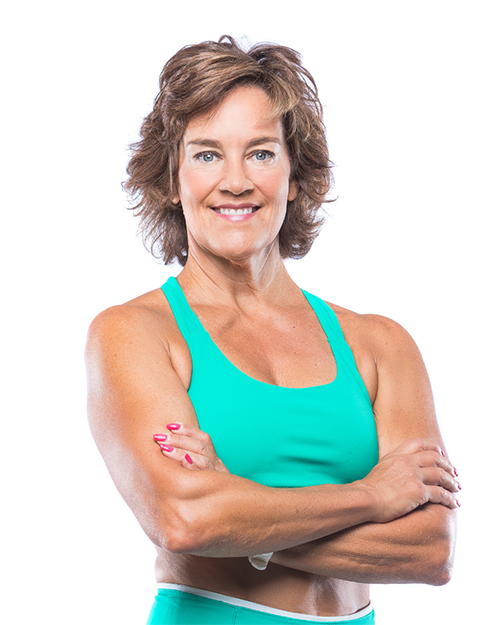How Exercise Can Make a Woman in Menopause Store More Fat
Featuring
Debra Atkinson, MS, CSCS
WATCH
LISTEN
READ
Rebekah Kelley: Welcome to the Humanized podcast, all about personalizing your health. I am your host, Rebekah Kelley, and today we are discussing How Exercise can Make a Woman In Menopause Store More Fat, with Debra Atkinson. Before I introduce Debra Atkinson, I want to remind everyone to subscribe and get all of our variety of casts in audio, video and transcription at HumanizedHealth.com. I’d also like to thank our lead sponsor, Village Green Apothecary, at MyVillageGreen.com.
A little bit about Debra Atkinson. She’s a wellness coach, hormone balancing fitness expert, best-selling author, podcast host, frequent speaker, TEDx presenter, and the founder of Flipping 50. She is passionate about helping women “flip” their second half with the vitality and energy that they want.
So, thank you so much for being with us, Debra.
Debra Atkinson: You bet. Thanks so much for being here. Love to talk about this subject and love to address these women. So let’s go.
Rebekah Kelley: Well, I have lots of questions for you. So excited to get smart about this. So, why do so many women gain weight in menopause, specifically belly fat? And all my girlfriends are asking this question, why is this happening to me right now?
Debra Atkinson: Right. It’s one of the first signs. So even for the lucky ones who don’t experience hot flashes and night sweats, that is usually one of the first signs. And honestly, until probably 5 years ago, even, and as recently as today, some women still don’t put together, oh, my hormones are changing and that’s why nothing I used to do that worked works anymore. Those are the infamous words I hear way too many times.
But the reason is this. That right during peri-menopause, so when we’re kind of working our way out of those reproductive years, nature’s turning us into a woman who doesn’t need that anymore, so we’re going to let it go. We have a roller-coaster ride of our estrogen levels, our testosterone and progesterone levels are taking us on a roller coaster, primarily trending down, but there are ups and downs along the way. But when that estrogen comes down, it, number one, has a muscle protecting component, and many women will recognize it has a bone protecting component, because we’ve talked about osteoporosis now for 25 years as a household word. We all know what that is. But the same is true for muscle. It’s very muscle protecting. So if you don’t have that protection anymore, you’re probably going to lose muscle faster and easier than you gain it, or even maintain it. That’s going to make you tend to gain fat easier than you ever did before.
So that’s one piece, but it really comes down to when estrogen comes down, your body naturally, being the amazing machine it is in so many other ways, it turns up cortisol. And it’s doing that in effort to say, well, I’ll just convert cortisol into estrogen. And now that’s a really inefficient way to make that happen. It can only compensate for about 10% of your estrogen. So it doesn’t work that way. But what does happen is we’re left with more cortisol. And cortisol deposits fat. So it tells your body, store fat, store fat, and your body can’t do two opposing tasks at the same time. When in doubt, it’s going to say, we must be under some kind of threat. We’re going to protect you. So we’ll just store a little here for a rainy day – it happens to be raining here in Scottsdale right now, oddly enough. So the combination of cortisol, number one, is bad. There’s also the, when we’re under stress, I don’t know about you, Rebekah, but fewer of us actually crave kale and salmon. You know, we want cake and we want bread and we want, let’s say…
Rebekah Kelley: Cupcakes, French fries, wine… [Laughs]
Debra Atkinson: Yeah. Anything that turns to sugar and/ or combines sugar and fat, spikes our insulin. When cortisol and insulin team up together, that is like two belly fat bullies teaming up against you. So we’re down and out. So that vicious cycle will happen again. You come off of a crash from having that sugar, you tend to want more sugar and it can be a vicious cycle.
So we are saying this statement over and over and over. Women in midlife are more susceptible to the negative effects of stress, and stress cortisol, that hormone, is kind of right there at the top of the mountain. So if you want to help yourself do one thing to help decrease belly fat, decrease your stress level.
Rebekah Kelley: Wow. Well, with all the exercise options available today, why do you think none of them are working? And, I mean, we hear of so many different ones, right? Strength training being in the orange zone… there’s so many different kinds. Why are none of them working for us?
Debra Atkinson: Well, here’s the biggest reason. Right now, and this is 2021 so you’d think we’d know better. We’re learning. But 39% of all sports medicine and exercise science research features female subjects. So, if you look at politics and you look at job and earnings, you might say, well, that’s not terrible, we’ve heard worse, right? 40, 60… But it gets worse when you think about it this way. So you and I, we go through – or will if we choose to, or are blessed to go through – seven major hormonal changes in our lives. Those seven, every one of them demands a specific exercise prescription. Men don’t do that. I mean, men have some hormonal change. They tend to see it, not until their 60s, but they certainly don’t have it every month. They certainly don’t get pregnant. I haven’t seen it yet, right? They don’t go through postpartum. Their turbulence at puberty is a lot less likely to be problematic than it is for a female. Those changes… and obviously if we said, okay, well, hormonal change, hormonal change, but no, you would never do the same kind of exercise for a young adolescent woman who wants to play basketball or volleyball and for a post-menopausal or post-partum woman. Those are very different exercise prescriptions. So now let’s do the math again: 39% pertains to women. If we divide that by seven, we get less than 10% and it’s about 6% of all research, if it’s evenly distributed. Now we know it’s probably not. But that’s very little research on the stage you’re in, on the stage I’m in. So if we didn’t know to ask, is the program that I’m doing designed based on research on women just like me, we’re gambling.
Rebekah Kelley: [Nodding] Can you talk a little bit about fat-burning zone versus fat-burning exercise and just kind of clear up the confusion around that, for me and for the listeners out there?
Debra Atkinson: Absolutely. So let’s just start with, what’s really popular today is HIIT, right? So if you do high-intensity interval training, we all know that burns fat. That’s a better fat burner, during and after. However, there’s still some very old-school people, primarily in bodybuilding or figure competition, and they still believe that doing very low-intensity exercise and doing it without food – which is a whole other interview, we won’t open that can of worms – is the best way to burn fat. And the answer to both of those is yes, you burn fat. You burn fat there, too. But we’re sitting down for this interview, at least I am. We’re burning about 99% fat right now. How well is that working for you? Cause you know, I’ve been sitting a lot and I’m still not seeing the results, right? So we burn it so slow that it’s not ideal.
So when we do high-intensity interval training, we are burning a smaller percent of fat, but we’re burning so many more calories that a small percent of a very big number is still burning more fat. But where we get into trouble as women is, all exercises is stress. So we’ve got to look at, what’s your status right now? Do you need exercise, or actually do you need a little less exercise? Some of that low-intensity walking or yoga might end up being fat burning, if that’s what you need, because we need to remove the stress because that’s the obstacle, versus doing more high intensity. But if you’re only walking and you’re doing your strength training – go, you! – but you might want to add interval training.
Rebekah Kelley: Well, then that gets into the next question. If you could give a blueprint to a woman in mid-life for the best kind of exercise, what would that be?
Debra Atkinson: Yes. And let’s agree right now that no two women watching this are in exactly the same status. Every woman’s journey through menopause is different. Somebody’s journey in their late 30s or 40s would be different for somebody in their 70s.
But if we could say, okay, here’s a guideline. Now, it’s only a blueprint. What’s true for you. Go through one of those quizzes like you were a teenager – if this, yes, okay, go over here, if no, go over here. So, it would be two full-body, total body strength training sessions every week, putting about 72 hours between them, Monday and Thursday. So you want to ditch that Monday, Wednesday, Friday schedule. Don’t fit into the clubs’ schedule, create your own, and then do one to three short high-intensity interval training sessions. When you start, you can increase to two or to three, as you progress and find what’s working. I’m feeling good. I like doing this. No injuries. So, those. You want to consider, you have 45 minutes in your interval bank every week. Not every session – every week. So you could do three 15-minute sessions plus a warm-up and cool-down, or two 25-minute sessions, 20, 25 minutes warm up and cool, and you’re good to go.
And you also don’t have to reach that quota. We tend to hear, oh, up to that much, I should do at least that much. [Laughs] Right? Cause more must be better. So we’ve got to stop that crazy “if it’s not working, I’ll do more of it” kind of attitude. You should already be getting a hint you’re feeling better, before you start to dial up the intensity.
That, and then moderate exercise, low to moderate walking every day. Be someone who moves regularly. That’s really the key.
Rebekah Kelley: Wow. Thanks Debra Atkinson, those are really valuable insights. Debra Atkinson can be found at www.DebraAtkinson.com. I’m going to spell that. D E B R A A T K I N S O N.com. And let me remind you to subscribe, to get access to all Humanized videos, podcasts and transcriptions from all of our thought leaders on personalized health at HumanizedHealth.com.
Thank you so much. That was wonderful.
Debra Atkinson: Thank you.









